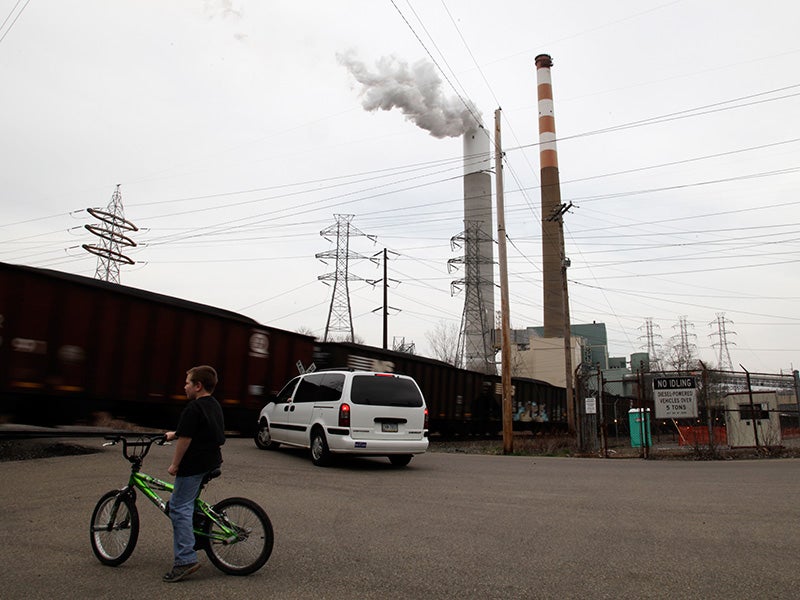Carbon Nation: Pollution is About Human Rights
In the United States, dirty power plants are the root of many health, civil and human rights issues.

This page was published 11 years ago. Find the latest on Earthjustice’s work.
The Obama administration’s historic proposal to limit carbon pollution from existing power plants—the single largest source of climate pollution—is a big step toward combatting climate change and also securing basic human rights.
In the United States, dirty power plants are the root of many health, civil and human rights issues. The pollution that pours out of coal-fired power plants makes people sick with chronic conditions like asthma and bronchitis, and prematurely ends lives. This is particularly true for people of color, low-income communities, children and the elderly—those who are hit ‘first and worst’ by climate change.
For decades, communities of color have been the dumping ground for power plant pollution. An overwhelming 78 percent of African Americans live in areas where coal-fired power plants directly contaminate the air they breathe. And according to the Centers for Disease Control, nearly half of all of Latinos—28 million—live in counties where pollution spewed from fossil-fueled power plants, is a particular threat to health.
The Obama administration’s limits on carbon pollution from power plants are a common-sense step toward ending this injustice and providing health benefits for all Americans. For every dollar invested through the Clean Power Plan, American families will see up to $7 in health benefits. Additionally, the proposed carbon standards will annually prevent up to 6,600 premature deaths, nearly 150,000 asthma attacks, and more than 490,000 missed work days.
However, there is still work to be done because the Clean Power Plan is not yet set in stone. To reap the full benefits of the plan and maximize the positive impacts on health, the EPA still needs to set final standards that achieve at least a 35 percent reduction in emissions from 2005 levels by 2020.
Over the next few months, the EPA will be holding public hearings and taking public comment. It’s a crucial period to let the Obama administration and our elected officials know that we need a plan that is as strong as possible and to get started right away.
The fossil fuel industry is funneling a great deal of money into blocking the proposed carbon standards. This is simply the industry’s latest attempt to boost corporate profits at the expense of our families and our future. To stop polluters and their allies from cheating us out of basic environmental and public health protections, we must express our support for a Clean Power Plan that is even stronger than proposed.
Tell the EPA that dirty power plants have choked our communities for long enough. The time to make these polluters clean up after themselves is now.
(This blog post is part of the weekly series Carbon Nation, discussing the U.S. EPA’s recent efforts to limit industrial carbon pollution from existing power plants. Earthjustice is advocating that the agency honor the commitments that President Obama made in his Climate Action Plan by setting strong standards that cut emissions from power plants by at least 35 percent below 2005 levels by 2020. Read more installments of Carbon Nation.)